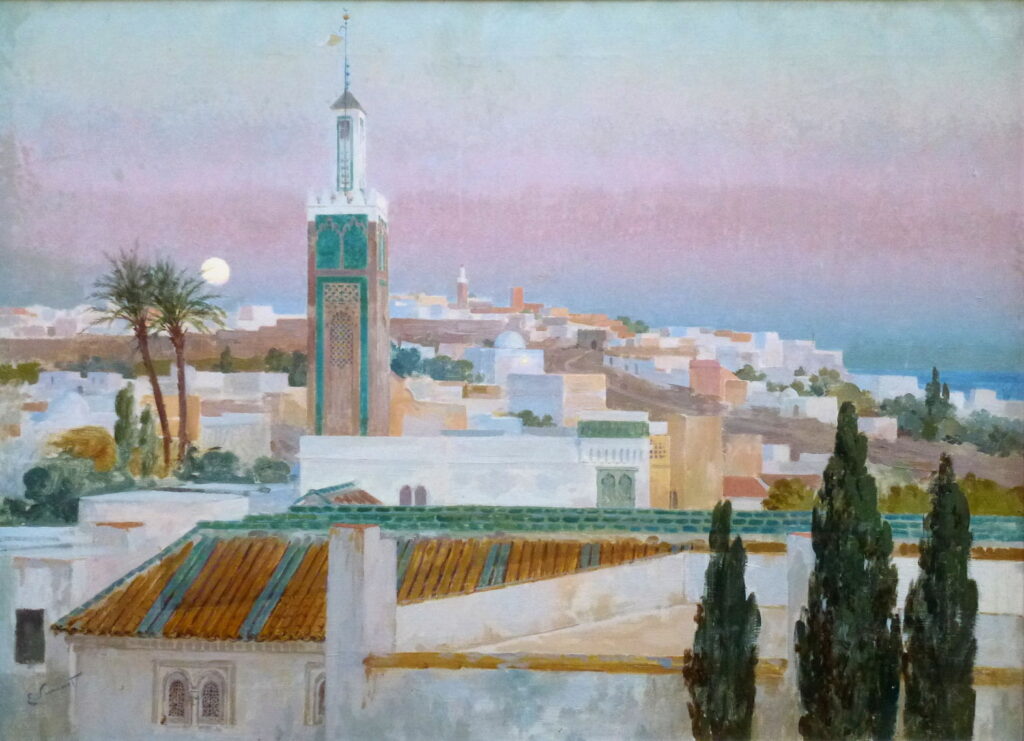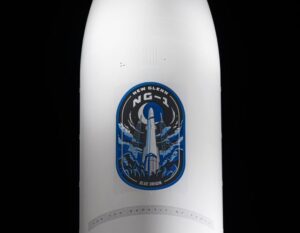A painted weekend in Morocco: 1867-1914

In the first of the two days of this whirlwind visit to Morocco, in north-west Africa, I showed the pioneering paintings of Delacroix, and the first of those made during the 1860s by the Spanish artist Marià Fortuny. In 1866, he met the young Ricardo de Madrazo, another aspiring painter, and shortly afterwards they visited the country together.
Marià Fortuny (1838–1874), African Beach (c 1867), watercolour on paper, 31.5 x 61 cm, Museu Nacional d’Art de Catalunya, Barcelona, Spain. Wikimedia Commons.
Fortuny’s watercolour sketch of an African Beach from about 1867 may well have been painted during that later visit to Morocco.
Twenty years later, in late 1887, Théo van Rysselberghe visited Morocco for the third time.
Théo van Rysselberghe (1862–1926), Maroc (Le grand sokko) (Morocco (The Great Souq)) (1887), oil on canvas, 27.5 x 40 cm, Private collection. WikiArt.
That year the theme of Les XX had been Neo-Impressionism, and brought van Rysselberghe into his lasting friendship with Paul Signac. Although still painting in Impressionist style, he started breaking down his colours and his marks grew smaller in readiness for a more Divisionist approach that he embraced fully during his visit to Morocco. This is shown in his painting of Morocco (The Great Souq) from that year.
Enrique Simonet Lombardo (1866–1927), Smoking Shisha in the Tearoom (1892), oil on panel, 29 x 46 cm, location not known. Wikimedia Commons.
Following that, Enrique Simonet visited North Africa on several occasions. His Smoking Shisha in the Tearoom (1892) shows Arab men drinking tea and smoking shisha tobacco (not hashish) in a brilliant expression of his developing Orientalism. In 1893-4 Simonet worked in Morocco as a war correspondent for a Spanish magazine.
Enrique Simonet Lombardo (1866–1927), The Barber at the Souk (1897), oil on canvas, 32 x 50 cm, location not known. Wikimedia Commons.
In The Barber at the Souk (1897) he maintained his highly detailed realism.
Enrique Simonet Lombardo (1866–1927), Tangier Market (1913), oil on canvas, 48 x 64 cm, location not known. Wikimedia Commons.
Simonet returned to Morocco, painting several works there including Tangier Market in 1913.
Enrique Simonet Lombardo (1866–1927), Terraces of Tangier (1914), oil on canvas, 56 x 84 cm, location not known. Wikimedia Commons.
Simonet was still there the following year, when he painted these Terraces of Tangier. The two large birds are probably white storks, which overwinter in Morocco and cross the Strait of Gibraltar during their migration.
Enrique Simonet Lombardo (1866–1927), Tangier at Dusk (1914), oil on canvas, 68 x 93 cm, location not known. Wikimedia Commons.
In his Tangier at Dusk, also from 1914, his style has changed towards using flatter areas of less intense colour, giving this oil painting the look of a watercolour.
The American painter Henry Ossawa Tanner visited Morocco in the same period, shortly before the First World War.
Henry Ossawa Tanner (1859–1937), Gateway, Tangier (c 1910), oil on plywood, 57.2 × 48.3 cm, Smithsonian American Art Museum, Washington, DC. Wikimedia Commons.
The keyhole-like Gateway, Tangier (c 1910) shows Tanner’s fascination with the shape of such entrances in north African architecture, which in turn may allude to Christ’s teachings.
Henry Ossawa Tanner (1859–1937), Entrance to the Casbah (1912), oil on wood pulp paper mounted on canvas, 81.3 x 66 cm, Pennsylvania Academy of the Fine Arts, Philadelphia, PA. By Wmpearl, via Wikimedia Commons.
An apparently identical location appeared a couple of years later in Tanner’s Entrance to the Casbah. In spite of its similarity with the earlier Gateway, Tangier, it’s presumed that he painted this during his return visit to Tangier and other parts of Morocco two years later, in 1912.




